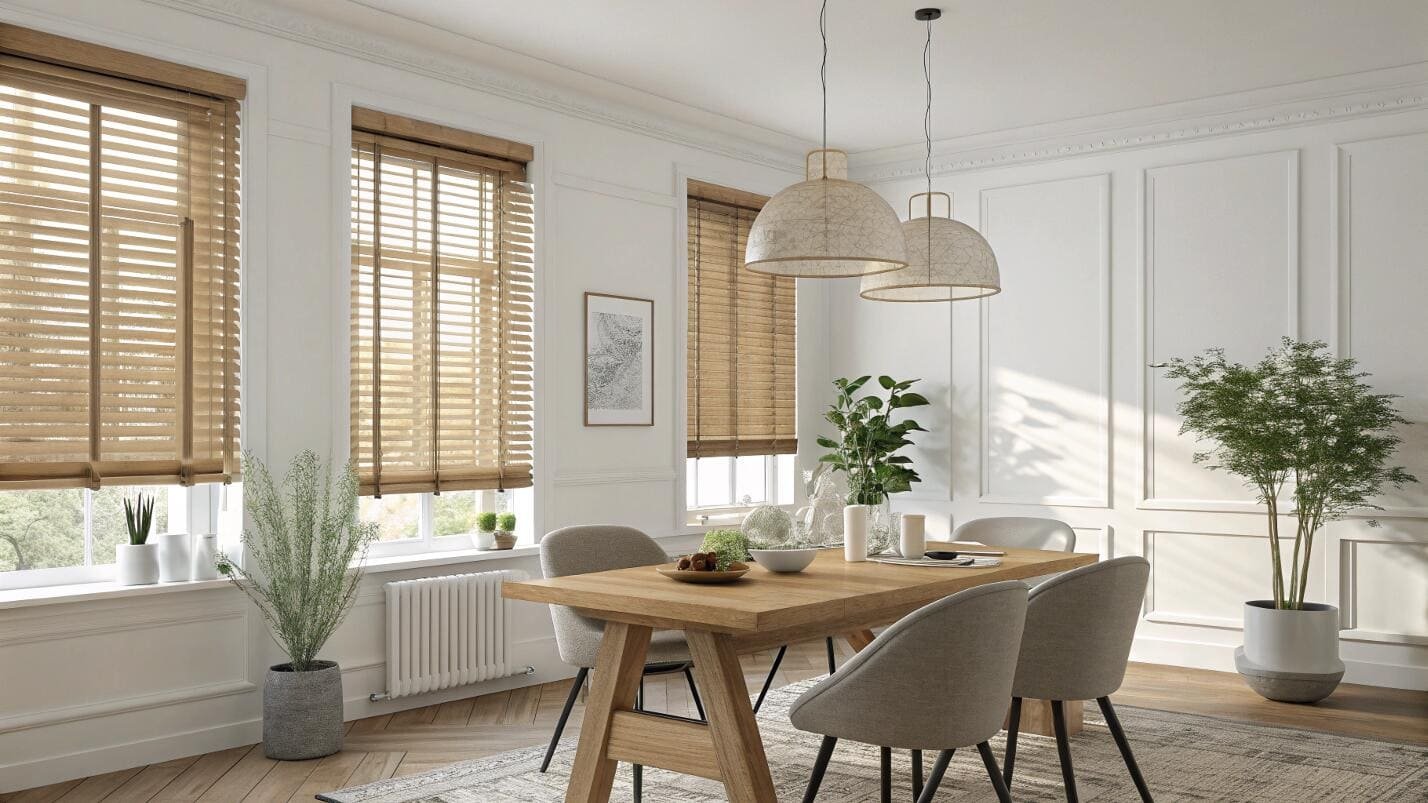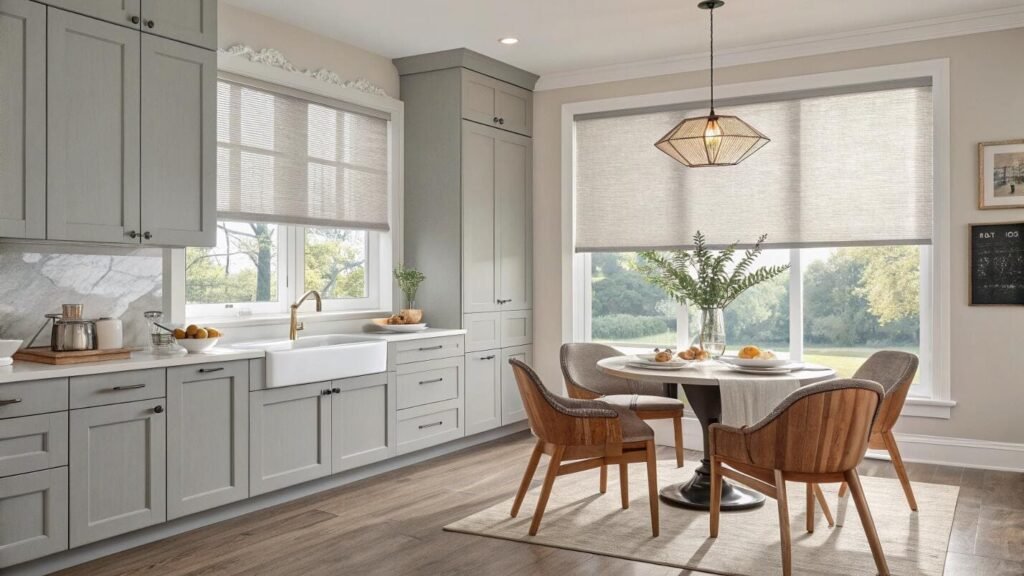Dangling cords are a safety hazard[^1] and an eyesore. They ruin a room's clean lines and pose a risk to children and pets, creating liability concerns for your projects.
Cordless blinds are unequivocally better, offering superior safety by eliminating strangulation hazards, a cleaner aesthetic, and greater daily convenience. They are now the standard for residential applications due to updated safety regulations.

I've seen the window covering industry make a massive shift in the last decade. The move away from corded blinds isn't just a trend; it's a fundamental change driven by safety and technology. For professionals like interior designer Emma, understanding this shift is crucial for specifying products that are not only beautiful but also responsible and future-proof. Let's delve into why cordless isn't just an option anymore—it's the standard.
Are cordless blinds really safer?
You specify blinds for a family home, but an exposed cord becomes a hidden danger. The constant worry about child safety[^2] is a huge liability you don't need.
Yes, cordless blinds are drastically safer. By eliminating long, dangling lift cords, they completely remove the strangulation hazard to children and pets, which is the number one safety risk associated with window coverings.

The safety difference is not small; it's absolute. The U.S. Consumer Product Safety Commission (CPSC) has identified corded window coverings as one of the top hidden hazards in the home. The risk comes from the loops that can be created by dangling pull cords, which can tragically lead to strangulation. Cordless systems eliminate this risk at its source. There are no loops to get tangled in. This is why safety standards have become so strict. In the United States, the WCMA (Window Covering Manufacturers Association) standard now requires that all stock products sold in stores be cordless or have inaccessible cords. As a project specifier, choosing cordless isn't just about aesthetics; it's about meeting a critical safety standard and removing a serious, known liability from your client's home. It’s a non-negotiable aspect of responsible design today.
Do cordless blinds last as long as corded ones?
You worry that a cordless mechanism with a hidden spring is more complex and likely to fail. Replacing a faulty "new technology" blind feels more costly than a simple corded one.
High-quality cordless blinds[^3] are designed to be just as durable, if not more so, than their corded counterparts. Their longevity depends on the quality of the internal spring motor and components, not the cordless design itself.

This is a concern I hear a lot, and it comes down to build quality. A cheap, poorly made cordless mechanism will certainly fail. The spring can lose tension or break. But the same is true for a cheap corded blind. The plastic cord lock will crack, and the thin cord will fray and snap from friction. A well-engineered cordless blind, however, often proves more durable. Think about how people operate corded blinds: they often yank the cord at an angle, causing immense wear on the lock mechanism. With a quality cordless system, the motion is smooth and direct. The internal spring motor is designed for thousands of cycles of controlled, gentle movement. Even better, motorized blinds—the ultimate cordless solution—operate with perfect, computer-controlled torque every time. This eliminates all user error, making them the most durable and long-lasting[^4] option by far.
What are the disadvantages of cordless blinds?
You want the clean look of cordless, but the window is behind a sofa or very high up. Operating it manually would be a daily struggle for your client.
The main disadvantages are difficulty operating on hard-to-reach windows and potential issues with very large, heavy blinds. Lower-quality mechanisms can also lose tension over time, leading to uneven operation.

While cordless is the superior choice in most cases, there are some practical limitations to the manual versions. The biggest challenge is with accessibility. If a window is located high on a wall, in a skylight, or behind furniture like a bathtub or a desk, reaching up to push or pull the blind every day is just not practical. Another issue can arise with extremely wide or heavy blinds. The spring mechanism has to be powerful enough to lift the weight, which can make the blind harder to operate smoothly. This is precisely where motorization shines. A motorized shade from VelaBlinds solves every single one of these disadvantages. With the touch of a button, a voice command, or an automated schedule, even the highest or most inaccessible windows can be operated effortlessly. Motorization is the answer to the limitations of manual cordless systems.
How long do automatic blinds last?
Investing in motorized blinds feels like a big step. You worry the motor will die in a few years, leaving your client with an expensive, non-functional window treatment.
A quality motorized blind from a reputable manufacturer can last 7-10 years or more. The lifespan of the motor is rated in cycles, and a good motor is engineered for well over a decade of daily residential use.

When a client like Emma asks about the longevity of our motorized solutions, I talk about engineering and testing. Our motors are not like cheap electronic toys; they are robust components designed for consistent performance. The lifespan is typically measured in "cycles," where one cycle is a full up-and-down movement. A quality motor is often rated for 10,000 cycles or more. If a client operates their blind once a day, that's only 365 cycles per year, giving the motor a theoretical lifespan of over 25 years. In reality, factors like battery life also come into play. Our rechargeable lithium-ion battery motors typically last 9-12 months on a single charge and can be recharged hundreds of times. The long-term value is incredible. The perfectly controlled movement eliminates wear and tear, meaning the shades themselves also last longer.
Which is more convenient for daily use?
Tangled, unsightly cords are a daily annoyance. They get caught, hang unevenly, and require fussing to get the blind to lock in place, frustrating your client.
Cordless operation is far more convenient for daily use. A simple push or pull is faster and cleaner than managing long cords. Motorized cordless blinds offer the ultimate convenience, allowing control via remote, app, or voice.

Let's compare the daily experience. With a corded blind, the routine is: find the cords, untangle them if necessary, pull them to raise or lower the blind, then move them to the correct angle to engage the lock. It’s a multi-step process that can be clumsy. With a manual cordless blind, the routine is: push up or pull down. That's it. The motion is direct, intuitive, and takes one second. There are no cords to clutter the windowsill or get caught on objects. This clean simplicity is a massive upgrade in daily user experience. Then you have motorization, which takes convenience to another level entirely. Your client doesn't even have to walk over to the window. They can adjust every blind in the room simultaneously from the sofa with a remote. They can schedule the blinds to open with the sunrise or close for privacy in the evening. This level of automation simplifies daily routines and adds a touch of luxury.
How do cordless and corded options compare in cost and value?
Cordless and motorized options seem more expensive upfront. You need to justify the extra cost to a client or project manager who is focused on the bottom line.
Corded blinds are cheapest upfront. Manual cordless options cost slightly more. Motorized blinds have the highest initial cost but offer the greatest long-term value through safety, convenience, durability, and a premium aesthetic.

When discussing cost, I always advise my clients to think in terms of total value, not just the initial price tag. While a corded blind might have the lowest upfront cost, it comes with hidden costs: the safety liability, the visual clutter, and the potential for faster wear due to improper use. Manual cordless is a modest step up in price, but that small investment buys you priceless safety and a significantly better user experience. Motorization represents the highest initial investment, but it delivers a return across multiple fronts. It provides the ultimate in safety and convenience, enhances the lifespan of the product, and adds a tangible "wow" factor that can even increase a property's resale value. For high-end residential or commercial projects, the value proposition of a smart, automated system is incredibly strong.
Value Comparison Table
| Feature | Corded Blinds | Manual Cordless | Motorized Cordless |
|---|---|---|---|
| Safety | Low (Hazard) | High | Highest |
| Convenience | Low | Medium | Highest |
| Aesthetics | Cluttered | Clean | Cleanest |
| Durability | Medium | High | Highest |
| Initial Cost | Lowest | Medium | Highest |
| Long-Term Value | Low | High | Highest |
Conclusion
Choosing cordless blinds is an investment in safety, convenience[^5], and modern design. It's the new standard, ensuring your projects are beautiful, functional, and responsibly specified for years to come.
---
[^1]: Understanding safety hazards can help you make informed decisions about home design and child safety.
[^2]: Learn tips for making your home safer for children with the right window coverings.
[^3]: Explore the benefits of cordless blinds for enhanced safety and aesthetics in your home.
[^4]: Find out about the lifespan of motorized blinds to ensure a smart investment.
[^5]: Discover how cordless blinds simplify daily use and enhance your living experience.Partner with VelaBlinds for Your Next Project
Smart window treatments shouldn't be complicated. After working with 500+ distributors and contractors worldwide, I've streamlined the process to get you quality products, competitive pricing, and reliable support - every time.
Why project professionals choose VelaBlinds:
- ✅ Fast, Accurate Quotes - Detailed specs and pricing within 24 hours
- ✅ Transparent Pricing - No hidden fees, volume discounts clearly outlined
- ✅ Quality Assurance - Direct partnerships with certified OEM manufacturers
- ✅ Project Support - Dedicated account manager from quote to delivery
Start your next project:
📧 Quick Quote: Send your requirements to info@velablinds.com
📱 Direct Contact: WhatsApp +86 137 2012 8317
🌐 Browse Solutions: https://velablinds.com/
📁 Product Resources: Access spec sheets, catalogs & project files
Paul Chen, Founder
"I built VelaBlinds to solve the real challenges I faced as a project buyer - long lead times, unclear specs, and unreliable suppliers. Let's discuss how we can power your projects with smarter blinds."
Serving distributors and contractors across North America, Europe, and Australia since 2018.




